Abstract
Appropriately timed use of trypsin, which inactivates competence factor (CF), and chloramphenicol made feasible a separation and characterization of early events in the development of competence in group H streptococci. Step 1 is production of CF, which is inseparable in time from the concomitant release of free CF into the medium. The producing cells, which are noncompetent at the time, also accumulate cell-bound CF (CB-CF) from the onset of CF synthesis. In step 2, the released CF is adsorbed or taken up in a trypsin-insensitive state by the producing cells and is not destroyed as previously suggested. This occurs rapidly in a transformation-supporting (complete) medium. The rapid decline in free CF is concomitant with the rise in CB-CF, and a maximal increase in the latter does not occur in cultures exposed to trypsin, which inactivates any trypsin-accessible CF. The rapid increase in CB-CF (above trypsin-treated levels) leads to step 3, the induction of competence. All of these steps probably require protein synthesis, because each is inhibited by chloramphenicol. The data also indicate that only free CF that is subsequently adsorbed, and which thus leads to maximal levels of trypsin-insensitive CB-CF, is the effective inducer of competence in either CF-producing (Challis) or CF-nonproducing (Wicky) cultures. The processes induced by the newly bound CF are not fully understood, but certain new properties, previously described by others as indicating competence, were measured during the several steps of competence development. Cell aggregation at pH 2 appears to be related to CB-CF and can be shown before this bound CF has induced competence. The ability of cultures to autolyze maximally can be diminished by trypsin treatment of precompetent cells without affecting subsequent competence development as measured by transformation.
Full text
PDF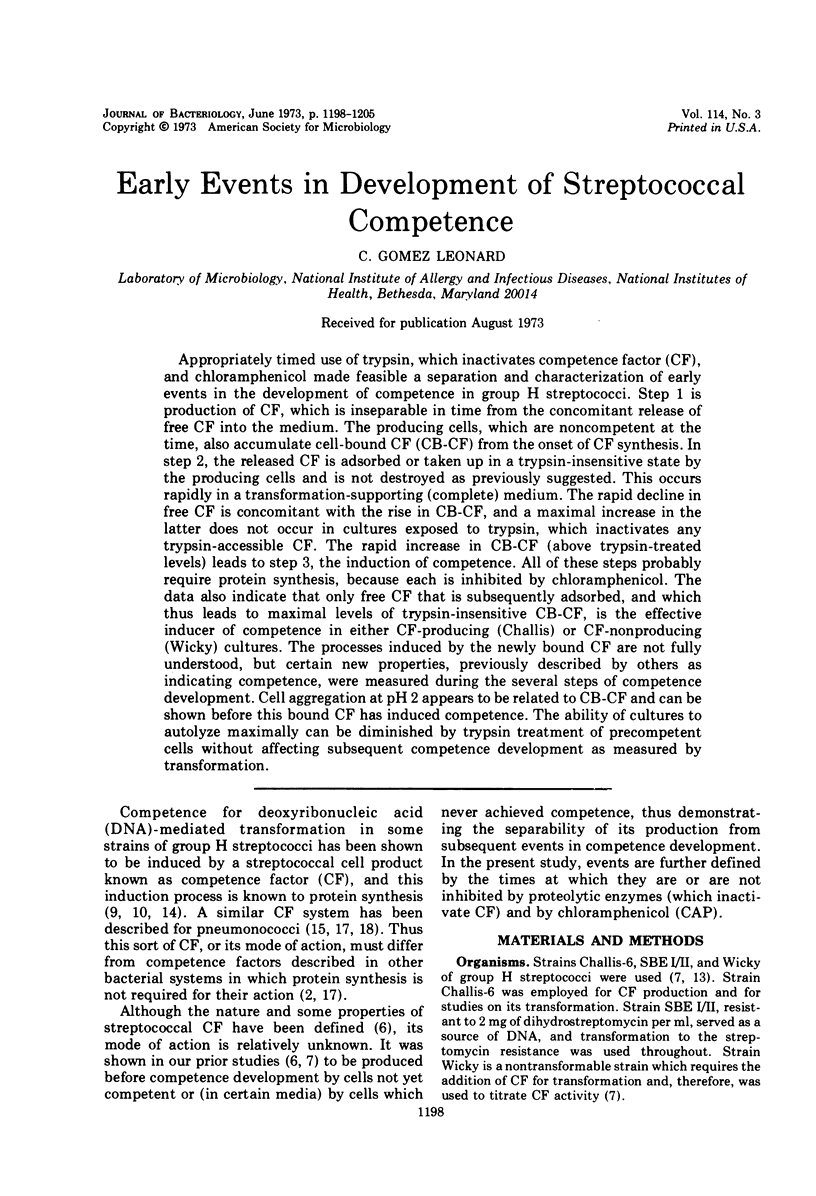
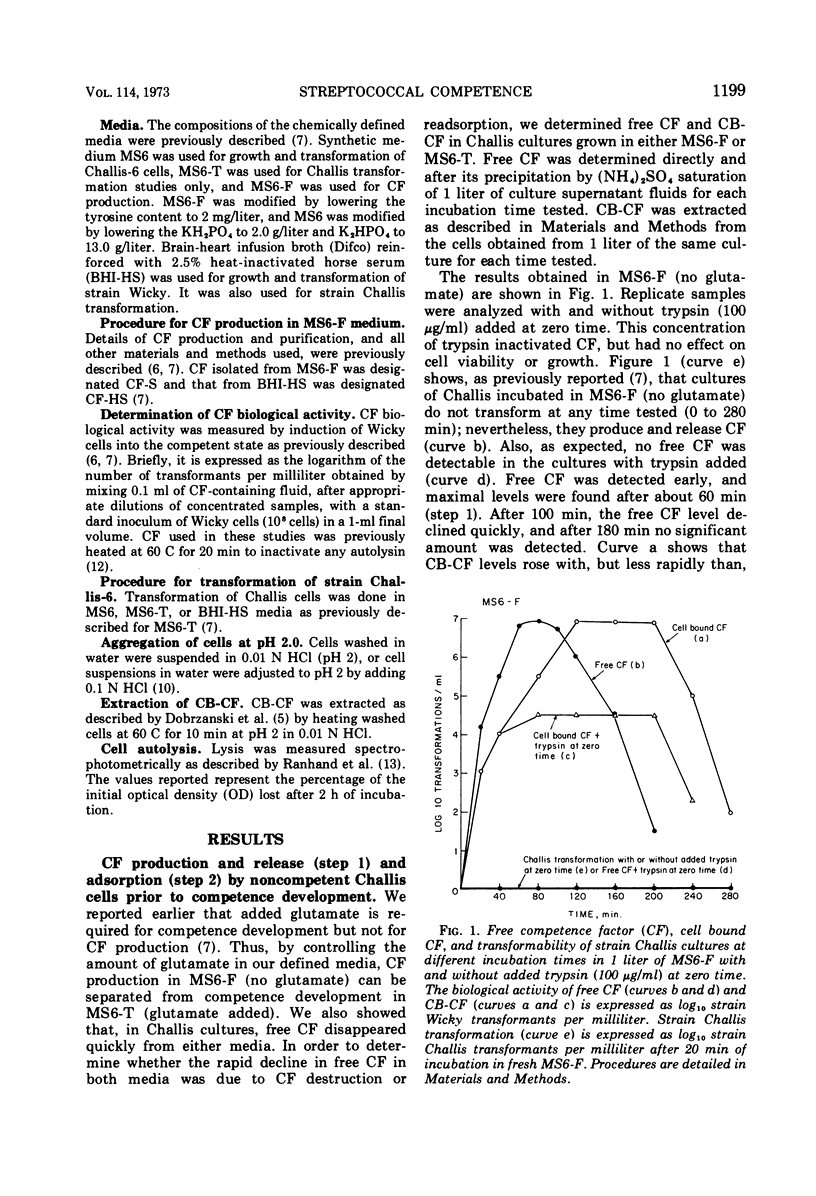
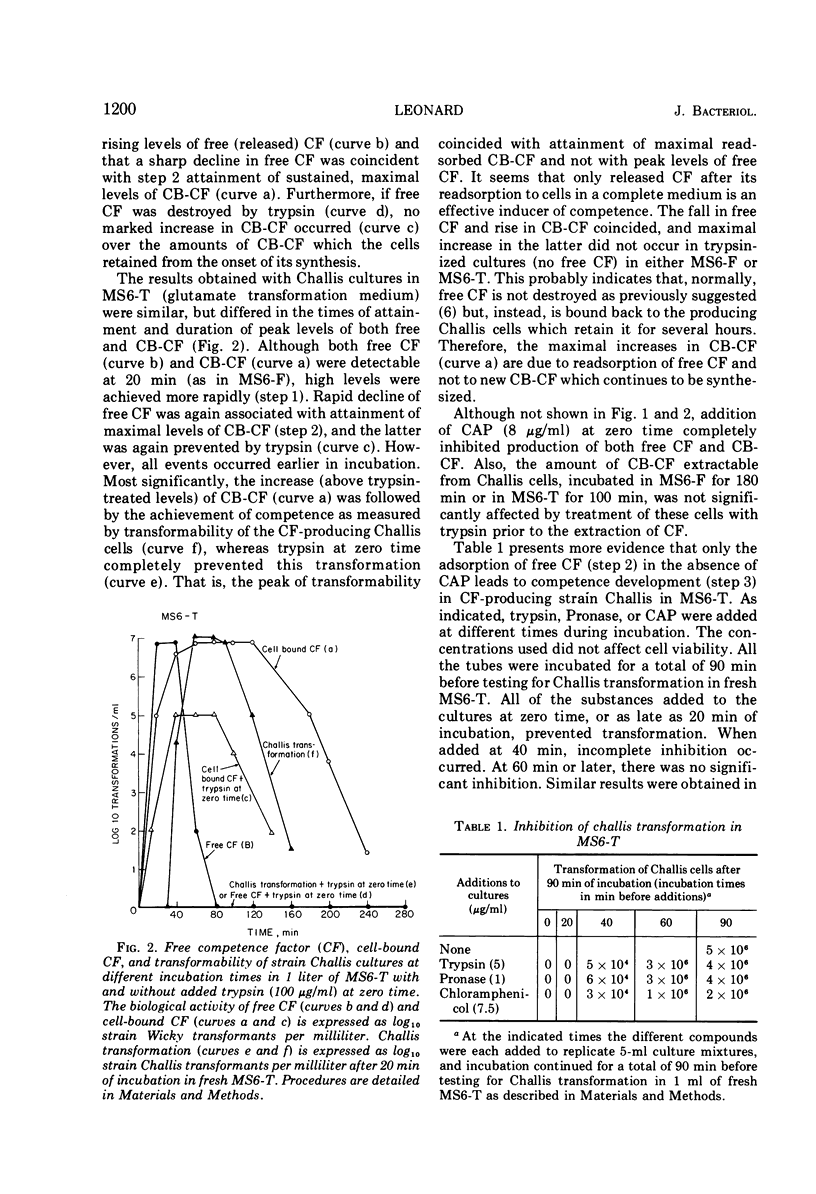
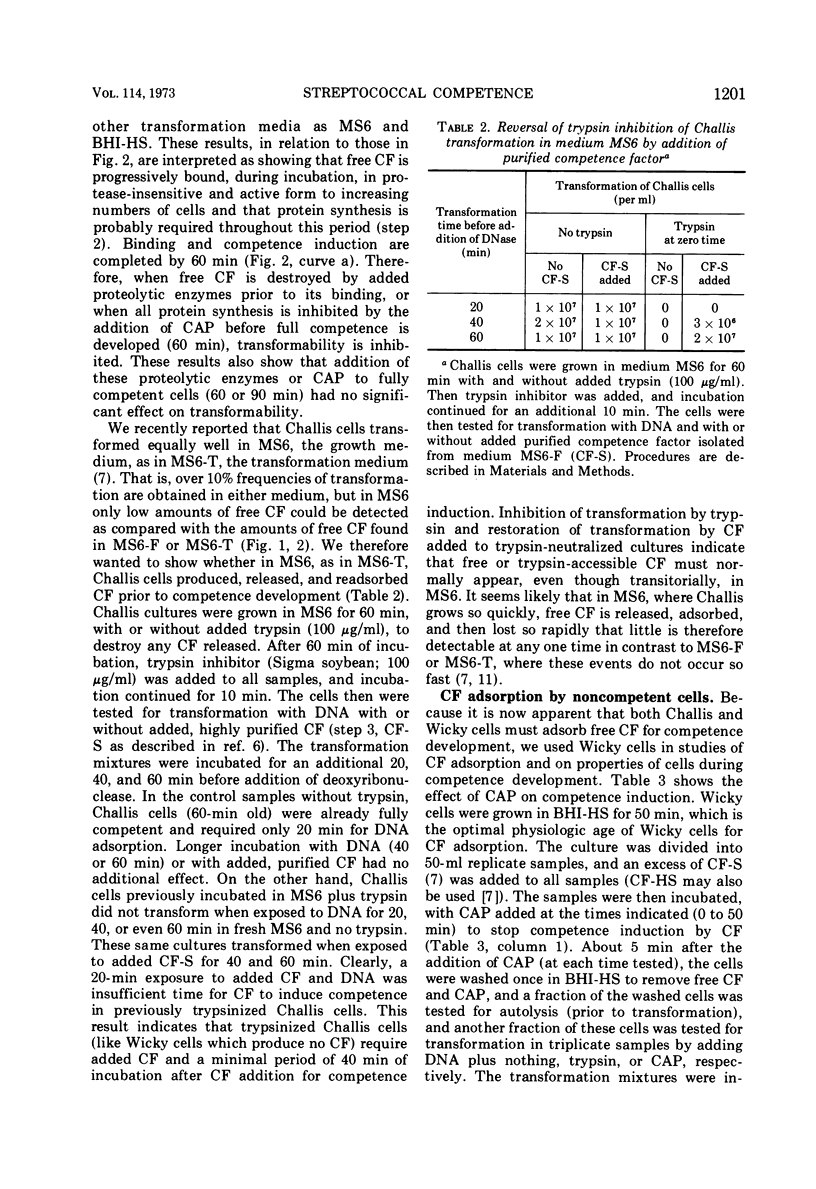
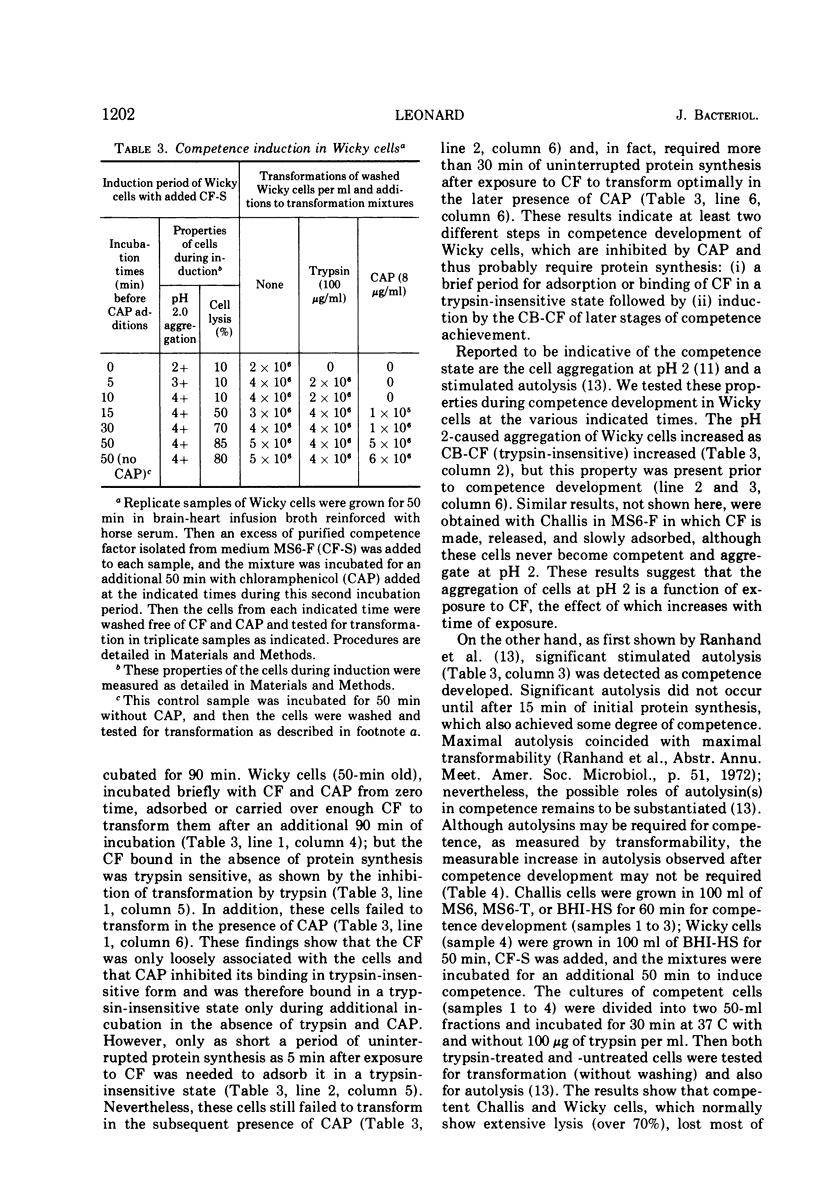
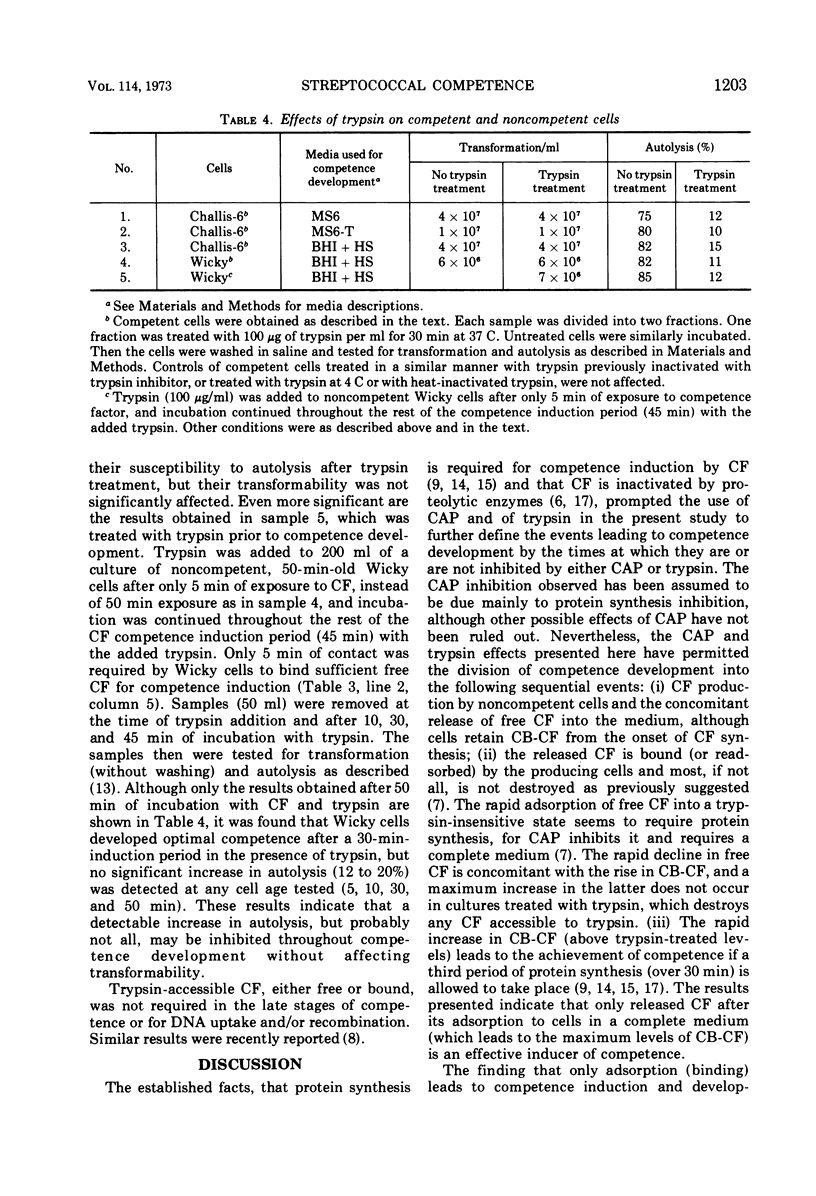
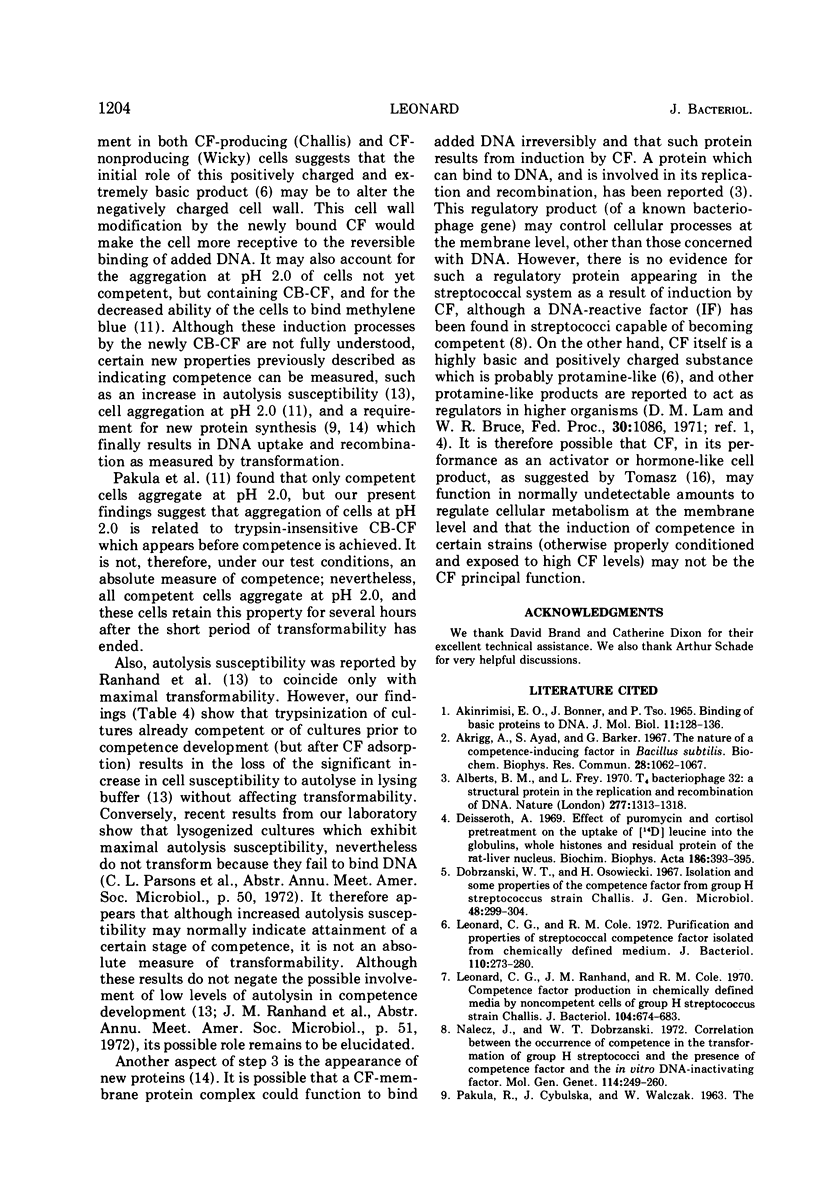
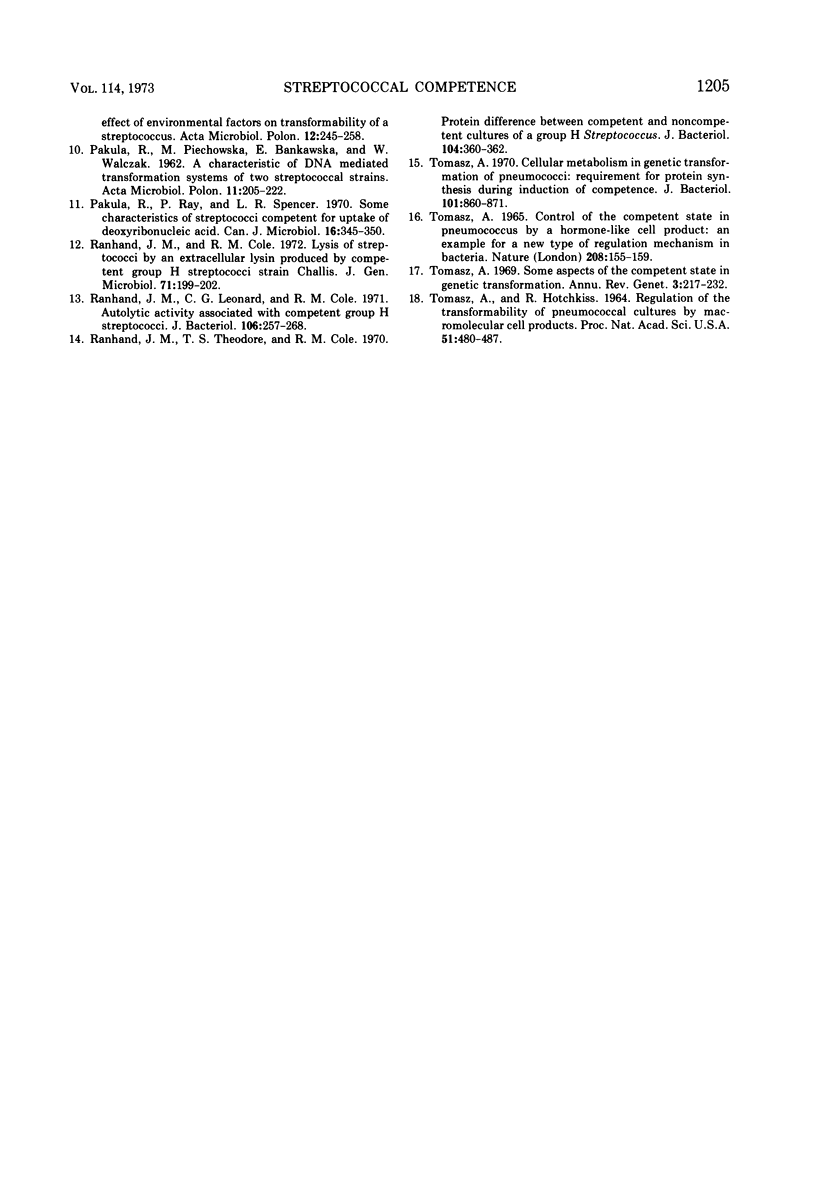
Selected References
These references are in PubMed. This may not be the complete list of references from this article.
- AKINRIMISI E. O., BONNER J., TSO P. O. BINDING OF BASIC PROTEINS TO DNA. J Mol Biol. 1965 Jan;11:128–136. doi: 10.1016/s0022-2836(65)80178-4. [DOI] [PubMed] [Google Scholar]
- Akrigg A., Ayad S. R., Barker G. R. The nature of a competence-inducing factor in Bacillus subtilis. Biochem Biophys Res Commun. 1967 Sep 27;28(6):1062–1067. doi: 10.1016/0006-291x(67)90090-3. [DOI] [PubMed] [Google Scholar]
- Alberts B. M., Frey L. T4 bacteriophage gene 32: a structural protein in the replication and recombination of DNA. Nature. 1970 Sep 26;227(5265):1313–1318. doi: 10.1038/2271313a0. [DOI] [PubMed] [Google Scholar]
- Dobrzanski W. T., Osowiecki H. Isolation and some properties of the competence factor from group H Streptococcus strain Challis. J Gen Microbiol. 1967 Aug;48(2):299–304. doi: 10.1099/00221287-48-2-299. [DOI] [PubMed] [Google Scholar]
- Leonard C. G., Cole R. M. Purification and properties of Streptococcal competence factor isolated from chemically defined medium. J Bacteriol. 1972 Apr;110(1):273–280. doi: 10.1128/jb.110.1.273-280.1972. [DOI] [PMC free article] [PubMed] [Google Scholar]
- Leonard C. G., Ranhand J. M., Cole R. M. Competence factor production in chemically defined media by noncompetent cells of group H Streptococcus strain Challis. J Bacteriol. 1970 Nov;104(2):674–683. doi: 10.1128/jb.104.2.674-683.1970. [DOI] [PMC free article] [PubMed] [Google Scholar]
- Nalecz J., Dobrzański W. T. Correlation between the occurrence of competence in the transformation of group H Streptococci and the presence of the competence factor and the in vitro DNA-inactivating factor. Mol Gen Genet. 1972;114(3):249–260. doi: 10.1007/BF01788894. [DOI] [PubMed] [Google Scholar]
- PAKULA R., CYBULSKA J., WALCZAK W. THE EFFECT OF ENVIRONMENTAL FACTORS ON TRANSFORMABILITY OF A STREPTOCOCCUS. Acta Microbiol Pol. 1963;12:245–257. [PubMed] [Google Scholar]
- PAKULA R., PIECHOWSKA M., BANKOWSKA E., WALCZAK W. A characteristic of DNA mediated transformation systems of two streptococcal strains. Acta Microbiol Pol. 1962;11:205–222. [PubMed] [Google Scholar]
- Pakula R., Ray P., Spencer L. R. Some characteristics of streptococci competent for uptake of deoxyribonucleic acid. Can J Microbiol. 1970 May;16(5):345–350. doi: 10.1139/m70-061. [DOI] [PubMed] [Google Scholar]
- Ranhand J. M., Cole R. M. Lysis of streptococci by an extracellular lysin produced by competent group H streptococcus strain CHALLIS. J Gen Microbiol. 1972 Jun;71(1):199–202. doi: 10.1099/00221287-71-1-199. [DOI] [PubMed] [Google Scholar]
- Ranhand J. M., Leonard C. G., Cole R. M. Autolytic activity associated with competent group H streptococci. J Bacteriol. 1971 Apr;106(1):257–268. doi: 10.1128/jb.106.1.257-268.1971. [DOI] [PMC free article] [PubMed] [Google Scholar]
- Ranhand J. M., Theodore T. S., Cole R. M. Protein difference between competent and noncompetent cultures of a group H Streptococcus. J Bacteriol. 1970 Oct;104(1):360–362. doi: 10.1128/jb.104.1.360-362.1970. [DOI] [PMC free article] [PubMed] [Google Scholar]
- TOMASZ A., HOTCHKISS R. D. REGULATION OF THE TRANSFORMABILITY OF PHEUMOCOCCAL CULTURES BY MACROMOLECULAR CELL PRODUCTS. Proc Natl Acad Sci U S A. 1964 Mar;51:480–487. doi: 10.1073/pnas.51.3.480. [DOI] [PMC free article] [PubMed] [Google Scholar]
- Tomasz A. Cellular metabolism in genetic transformation of pneumococci: requirement for protein synthesis during induction of competence. J Bacteriol. 1970 Mar;101(3):860–871. doi: 10.1128/jb.101.3.860-871.1970. [DOI] [PMC free article] [PubMed] [Google Scholar]
- Tomasz A. Control of the competent state in Pneumococcus by a hormone-like cell product: an example for a new type of regulatory mechanism in bacteria. Nature. 1965 Oct 9;208(5006):155–159. doi: 10.1038/208155a0. [DOI] [PubMed] [Google Scholar]


